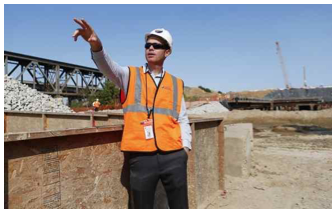CommentsPERSPECTIVE-As much as the California High Speed Rail Authority would like to hold its own version of the Golden Spike ceremony that marked the completion of the first transcontinental railroad, it is more likely to experience rusty nails driven into its already beleaguered and overly-optimistic business plan.
The latest derailment affecting the timeline – and undoubtedly the cost – is a two-year delay in completing environmental reviews of the project.
This news comes on top of growing concerns about tunneling, not just in the San Gabriel Mountains, but the Pacheco Pass connecting San Jose with the San Joaquin Valley. Even if the almost 14 miles of tunnel is bored, it could be a budget-buster and throw the project even further behind. In view of this challenge, attracting bond investors will be difficult for this segment; yields would have to be enhanced to generate investment, diminishing the already slim prospects of the system operating in the black.
When voters approved $9 billion in bonds in 2008 to start the project, the measure stated that operating subsidies from public funds would not be permitted. But we are on the fast track to just such support. The costs, which will most certainly blow through the current estimate of $64 billion, could easily triple. Although large overruns are common on major projects (i.e., the Big Dig in Boston was over five-times the original estimate), the public was misled as to this possibility with HSR.
So far, nothing has been delivered according to promises made in selling the concept to the voters – not even close. Even the train speed has been downgraded.
I happen to be a fan of rail travel. I used Amtrak and Metrolink to commute from LA to Irvine. I often thought how much more comfortable and reliable the trip could have been had the trains been able to run on dedicated tracks, free from freight traffic delays. The current engines can run at 100 miles per hour. While not high speed, there is no reason why most commuters from the far suburbs of Los Angeles couldn’t reach downtown in about an hour.
Instead of pouring billions into HSR, a system which will serve a relatively thin segment of the traveling public, we can relieve much traffic from our clogged freeways in Southern California by investing in the region’s rail infrastructure – far more than could be reduced on I-5 through the San Joaquin Valley by the bullet train.
A similar investment could be made in the Bay Area with the same results.
There would be no costly tunneling in either market.
Our next governor should kill this vanity project. Candidate Newsom was once on record as opposing the project …maybe he will come back to his senses. His key opponent, former mayor Villaraigosa, has always been for it.
The voters should demand that both candidates explain just how they plan to fund it.
(Paul Hatfield is a CPA and serves as President of the Valley Village Homeowners Association. He blogs at Village to Village and contributes to CityWatch. The views presented are those of Mr. Hatfield and his alone and do not represent the opinions of Valley Village Homeowners Association or CityWatch. He can be reached at: [email protected].) Prepped for CityWatch by Linda Abrams.
















